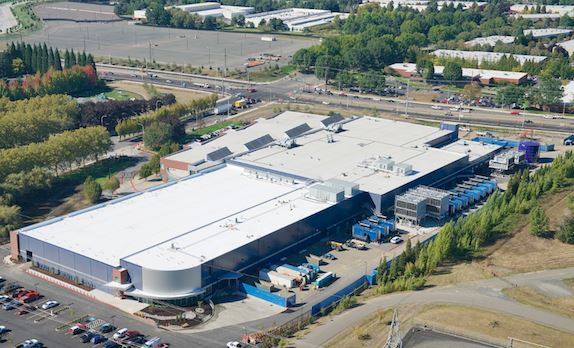Microsoft's LinkedIn continues to go its own way in the cloud

When Microsoft initially purchased LinkedIn, many assumed LinkedIn would be moved to Microsoft's Azure cloud sooner rather than later.

That has not happened. Nor do there seem to be any plans for this in the near term.
In some ways, LinkedIn not running on Azure isn't surprising. Microsoft officials have been promising for years that Office 365 would one day be moved to Azure and that still hasn't happened. Xbox Live also does not run on Azure. Instead, Microsoft seems to be focusing on introducing new features for these in the form of Azure services, while leaving the existing legacy base of Office 365 and Xbox Live where they are (running in their own data centers).
Networking
But in other ways, LinkedIn's data center independence is surprising, especially given Microsoft's focus in the past few years on getting as many ISVs (independent software vendors) and service providers to commit to Azure as their "preferred cloud." Microsoft has cemented (and touted) partnership deals with Adobe, SAP, Box and others as major Azure proof points.
When Microsoft appointed LinkedIn's infrastructure chief Kevin Scott as chief technology officer in early 2017, I wondered whether this signaled an intention by Microsoft's senior leadership to bring together the LinkedIn and Microsoft clouds. But the answer seems to be no.
In April 2017, a senior LinkedIn official said publicly that LinkedIn planned to continue to manage and control its own infrastructure for the foreseeable future. And a February 2, 2018, post from LinkedIn engineering VP Sonu Nayyyar titled "Lessons learned from LinkedIn's Data Center Journey" also points to LinkedIn continuing to run its own, independent datacenters.
Nayyar explained that in 2012, LinkedIn realized it needed to change its data center strategy.
"Instead of relying on third-party data center vendors, we needed to operate and manage our own data centers. It was a pivotal decision and created a new principle for us: 'control our own destiny,'" he noted.
LinkedIn decided to go multi-colo -- serve its applications from multiple data center sites. The then-independent company opened a new data center every year from 2013 to 2015. It also opted to build, moving forward, for hyperscale, which resulted in LinkedIn's "Project Altair," its data center fabric that "could be scaled horizontally without changing the fundamental architecture of the network or interrupting its core during upgrades." In 2016, LinkedIn opened its Oregon data center (pictured in the image embedded at the top of this post) that used the Project Altair designs.
Going forward, LinkedIn plans to continue to build out its own data centers. Nayyar mentioned LinkedIn's Open19 project, which is designed to make data center hardware more interoperable and efficient. (Open19 sounds almost identical to what Microsoft is doing with "Project Olympus" and the Open Compute Project.) LinkedIn also is looking at OpenFabric and software-driven infrastructure as it expands, Nayaar blogged.
When Microsoft purchased LinkedIn in 2016, Microsoft officials said they intended to take a largely hands-off approach in managing its biggest acquisition. They're seemingly staying true to their word.
Over the past year, Microsoft and LinkedIn have achieved several of the integration milestones that CEO Satya Nadella outlined for the company, and are working to bring their respective data graphs together. Just this week, Microsoft began rolling out its promised Resume Assistant, which integrates Word 2016 and LinkedIn, to Office 365 users on Windows.
But integrating the Microsoft Azure and LinkedIn cloud platforms still doesn't seem to be on the to-do list. I'm curious if it ever will be.
Update: It looks like LinkedIn plans to try to take advantage of some Azure features at some point in the future. LinkedIn CEO Jeff Weiner, speaking at a February 14 Goldman Sachs Technology & Internet conference, said LinkedIn is looking to use Azure AI services in general. But he also offered a few specifics about where LinkedIn could use Azure in the future
From his remarks:
"There's a lot of expertise there that we're increasingly going to be able to leverage. There's elements of Azure, for example, that we can leverage. It's going to meaningfully accelerate how we scale out video, posting video on LinkedIn. And those opportunities we're doing machine translation within our feeds, leveraging Azure capabilities. There's a fair number of areas that we are meaningfully able to accelerate by virtue of the investment that Microsoft has made thus far to date.
There was no mention by Weiner of moving any existing LinkedIn assets to Azure.
Previous and related coverage
LinkedIn's new Windows app integrates directly with Windows 10
Microsoft has integrated LinkedIn directly with Windows 10 in the new LinkedIn Windows 10 desktop app.
What's next on Microsoft's LinkedIn and Dynamics integration list
Microsoft has made generally available the first of its promised LinkedIn integrations. Here's what else is on the near-term list, as well as on the Dynamics CRM/ERP roadmap.
Microsoft brings LinkedIn, Translator apps to Huawei's Mate 10 Android phones
Microsoft's newest Android pal, Huawei, is making available customized versions of Microsoft's LinkedIn and Microsoft Translator apps as part of its new Mate 10 phones.